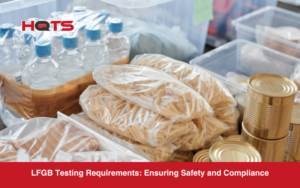Sourcing stainless steel plates comes with risks. Elements such as dimensional accuracy, surface quality, and compliance with standards are all factors that can influence the performance and longevity of the stainless steel plates, making steel quality control important.
One effective method to minimise these risks involves conducting quality inspections on the stainless steel plates right at the factory, prior to shipment. In this article, we delve into a basic stainless steel inspection checklist frequently utilised by third-party inspection agencies.
What Are the Common Defects in Stainless Steel Plates?
One question we frequently encounter at HQTS is about the most common quality defects that surface during our inspection processes. Although there are many types of defects can manifest, these defects can generally be classified into broader categories:
1. Imperfections
Surface flaws such as scratches, pits, dents, or unevenness frequently appear. These defects adversely impact the plates’ appearance, functionality, and corrosion resistance.
2. Staining or Discolouration
Factors like manufacturing processes or subpar material quality can lead to stains or discolourations on the plate surfaces, compromising not just the aesthetic appeal, but also the corrosion resistance.
3. Inaccurate Dimensions
Stainless steel plates must fit within the set dimensional tolerance levels for the intended application. However, a common issue is inaccurate dimensions, such as variations in the steel’s width, length, or thickness.
4. Mechanical Properties
Another critical point of concern is the mechanical properties, such as the tensile strength, yield strength, and elongation. These aspects can affect the plate’s structural integrity and performance.
Stainless Steel Inspection Checklist (Steps for Inspecting Stainless Steel Plates)
At HQTS, we have years of experience performing quality inspections on diverse stainless steels, from suppliers in China, India, and other regions. We follow a strict steel inspection checklist to detect both minor and major defects during our inspections. However, it’s important to note that the stainless steel inspection process can vary depending on the case. Here’s a glimpse into the parameters we generally consider when performing a stainless steel plate quality check.
1. Quantity and Packing Condition
The inspection begins with a quantity verification, checking the consistency with the purchase order, as well as examining the packing condition, including labelling accuracy and proper protection for transportation to prevent any damage during transit.
2. Visual Inspection
The inspector will evaluate the products’ appearance at random using visual inspection, seeking any defects such as surface imperfections, scratches, or inconsistencies in finish. They also verify if there’s any identification information on the steel plates’ surface.
For example, in the scenario below our inspector noticed that there were scratches on the top of each tray and one stainless steel plate had deformations.

3. Dimension Verification
The inspector employs calipers or a ruler for physical dimension verification, comparing the dimensions against the specified requirements and tolerances. This quality check usually includes:
- Measuring the plate’s thickness at various points.
- Verifying the width and length dimensions against the specified values.

4. Witnessed Chemical Analysis
Another standard parameter is ensuring the stainless steel aligns with the specified requirements and industry standards. This verification is typically achieved by witnessing the factory’s chemical analysis. The inspector observes the entire process, from the sampling of the stainless steel material to the actual testing and analysis.
The analysis typically uses a spectrometer to determine the percentage of various elements present in the stainless steel material, such as chromium, nickel, molybdenum, among others.

5. Document Review
Last but certainly not least, the inspector reviews the provided documentation, including the material test certificate, certifications and standards compliance, and other relevant documents.
Conclusion: Stainless Steel Plates Inspection
When purchasing stainless steel plates, it’s crucial to perform an inspection at the factory before receiving the goods. The stainless steel quality inspection can include visual inspections, quantity verification, dimension verification, document review, packing and labeling check, as well as witnessing a chemical analysis.
However, stainless steel plate quality control can be a challenge when the factory is located thousands of miles away. This is precisely where HQTS proves invaluable. With a footprint across more than 80 countries, we are well-equipped to facilitate steel inspections almost anywhere globally. Get in touch with us today for further information.




